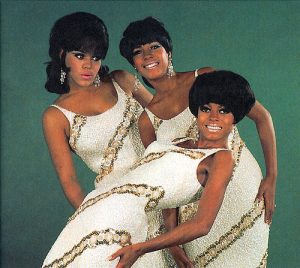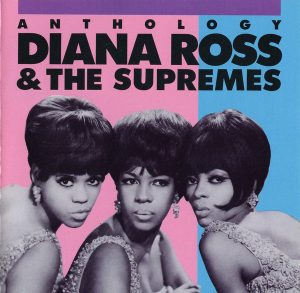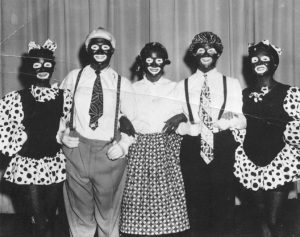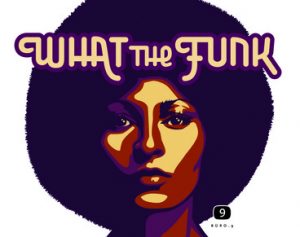Introduction
Diana “Diane” Ross was born March 26, 1944 in Detroit, Michigan. Ross is a successful American singer, songwriter, and producer. She began singing at a young age and rose to fame with her debut as the lead singer of the Supremes, one of Motown’s hit musical ensembles. Her success as the lead singer of the chart-topping girl group made it possible for future African American R&B and soul artists to find mainstream success. American singer and actress who achieved international stardom, first as leader of the vocal group the Supremes and later as a solo artist. Ross was named an ‘American Dream Girl” and had success as an American artist and actress.
Research Methodology/ Thesis
Research Methodology: Discovering Diana Ross, as the “American Dream Girl” consisted of extensive research. I focused on using credible biographies, and personal essays to further my familiarity with her. I was able to access articles and readings from the Robert W. Woodruff Library. Following my research, I was able to appreciate Diana Ross as an outstanding artist, actress, and pop culture influence.
Thesis: Diana Ross is a devastating artist. Her “rags to riches” narrative uplifts women across the world. Ross shines as an all-around female artist.
Primettes and Supremes


Singer and actress Diana Ross was part of the 1960s soul trio the Supremes before embarking on a successful solo career. Ross’s professional career began when she joined several neighborhood friends to form the pop-soul vocal group the Primettes. The Supremes originally came together as a female quartet known as the Primettes in 1959. The group was renamed the Supremes after signing a recording contract with Motown late that following year.The Supremes were an American female singing group, and premier act of Motown records during the 1960s. Founded as the Primettes, the Supremes were the most commercially successful group that belonged to Motown. The original group included Florence Ballard, Mary Wilson, Diana Ross, and Betty McGlown. The four girls formed the Primettes as the sister act to the Primes. When they signed to Motown records in 1960, the Supremes became a trio. Ross, Ballard, and Wilson carried on the group. In 1967 the Supremes entered their next phase with a new name, Diana Ross and the Supremes, foreshadowing Ross’s solo career, which she launched in 1970.
Solo Career
In 1969 Ross left the Supremes, and began her solo career. She continued to exceed stardom after becoming a solo act, and later received a number of accolades as an actress. In the process, she became one of the most influential and wealthiest women in show business. Her solo debut included two of her most successful singles. Beginning with “Ain’t no Mountain High Enough”, from her debut album, Diana Ross, enjoyed more than a decade of chart-topping success in multiple categories. Later in 1970, after her continuing success as a singer, Ross developed a film career, and branched out to begin an acting career in film and on television and Broadway. Her acting career began with her starring role as blues singer Billie Holiday, in Lady Sings the Blues. While the film received mixed reviews, Ross’s performance granted her an Academy award nomination for Best Actress. In 1975 she went on to star in Mahogany, where she recorded the hit theme song “Do You Know Where You’re Going To”, and three years later starred in The Wiz. Ross’s introduction to the film industry promoted her music career. In 1976, Ross somewhat surprised audiences when she ventured into the realm of disco music, and recorded her number-one hit “Love Hangover”. Much of her work reflected the stylistic shift from pop and R&B. After going solo, Ross graduated from the nightclub circuit, to major concert tours. Her concerts became major media events. Ross was among the most successful female artists. By 1980 she had sold more than 100 million records, and had been named “Female Entertainer of the Century” by Billboard magazine. Ross carried the statues as one of the preeminent performers of her time, and in 1988 was inducted into the Rock and Roll Hall of fame along with the Supremes.
Accomplishments
Awards:
Golden Globe- Most Promising Newcomer- Female (1973)
BET Award- Lifetime Achievement Award (2007)
César Award- Honorary César (1976)
Grammy- Lifetime Achievement Award (2012)
Image Awards- Best Actress- Motion Picture (1972)
TV Land Award- TV’s Greatest Music Moments (2006)
Star on Walk of Fame (1982)
Nominations:
Oscar- Best Actress in a leading role (1973)
Golden Globe- Best Performance by an Actress in a Miniseries or Motion Picture Made for Television (1995)
Golden Globe- Best Actress in a Motion Picture- Drama (1973)
BAFTA Film Award- Best Actress (1974)
Saturn Award- Best Actress (1979)
CableACE- Performance in a Musical Special or Series (1991)
ACE- Actress in a Comedy or Music Program (1984)
Discography
*Click here for complete Discography*
- 24 Studio Albums
- 5 Live Albums
- 30 Compilation Albums
- 1 EP
- 91 Singles
- 4 Soundtrack Albums

Powerpoint Presentation
Conclusion
Diana Ross’s success as an African American female artist has influenced music artists all over the world. As an artist, performer, and actress, Diana Ross has proven herself to be the “American Dream Girl”.
Bibliography
Adrahtas, Tom. Diana Ross : The American Dream Girl : A Lifetime to Get Here. Bloomington, IN: AuthorHouse, 2006.
“Diana Ross.” Billboard 105, no. 43 (1993).
Fleetwood, Nicole R. On Racial Icons : Blackness and the Public Imagination. Pinpoints: Complex Topics, Concise Explanations, [2]. New Brunswick, New Jersey: Rutgers University Press, 2015.
Hamilton, Jill. “Diana Ross.” Rolling Stone 773, no. 773 (1997): 130–131.
Haskins, James, and Jim Spence. Diana Ross : Star Supreme. Women of Our Time. New York, N.Y.: Viking Kestrel, 1985.
Wyeth, John. Diana Ross. Black Americans of Achievement. New York: Chelsea House, 1996.
http://www.imdb.com/name/nm0005384/awards
Other Works By Erin Alford

Thank You for a Great Semester- Erin’s Final Words
After registering for Survey of African American Music, I was under the impression that this would be a lecture-based class where we would have read

African American Music: 1965-1990
African-American music covers a diverse range of music genres created by African-Americans. The earliest forms of African American music were imported with the slaves themselves. As

The Evolution of Hip Hop Music- Erin Alford
Hip Hop Music music originated in the early 1970s and continues to evolve to the present day. Hip-hop is a creative expression,

Earth Wind and Fire Live: Greek Theater ’04 By: Erin Alford
Earth Wind and Fire is an American band that has spanned the genres of many musical styles. They were one of the most popular American

Musical Theater: Minstrel Shows
The Minstrel Show was an American form of entertainment developed in the early 19th century. The full-length theatrical entertainment featured performers in blackface who performed

What is Funk Music? By: Erin Alford
Funk is a music genre that originated in the mid-1960s when African American musicians created a new form of music through a mixture of soul,
Copyright © 2017 Erin Alford

